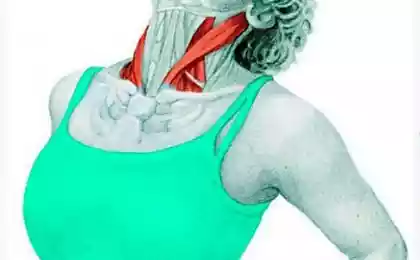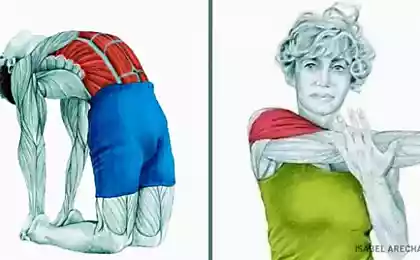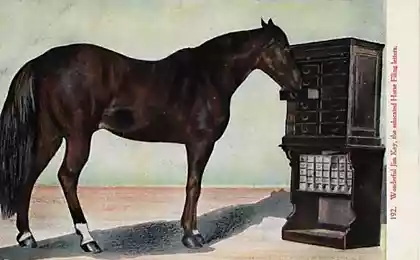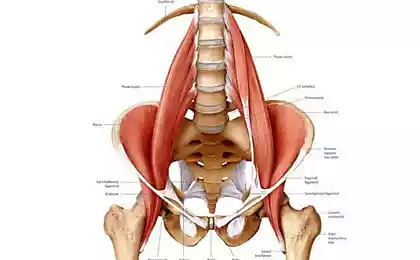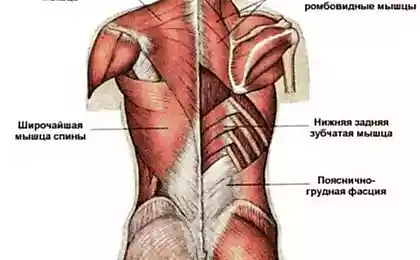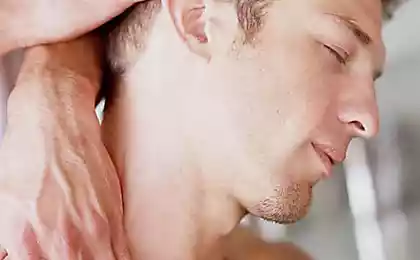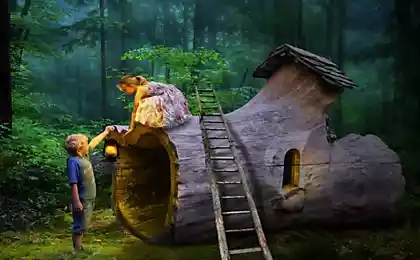522
Jim Davis: how to "pump" your skills using your imagination
Scientist cognitivist, author of the book "Theory of Attraction" Jim Davis about how we have motor idea how they are transformed into physical movement and can mental training help us to improve your fitness results in sports and other skills that require the inclusion of the imagination.
I bet when you woke up this morning, even before he opened his eyes, you knew where your limbs. You do not have to look at them or try to move to feel their presence. This is because you have a sense of proprioception (also sometimes called "transfer"). Due to this feeling you have mental images that are specific to him, just as they are through hearing or sight. This is motor imagery. In the same way as visual imagery use the same areas of the brain that visual perception, motor imagery occur in the same areas of the brain that are responsible for moving your body.

Imagine that your hands are clasped in front of you. Now imagine how you straighten your legs and then spread them. Despite the fact that you can have a visual image that accompanies these motor representations, and the movement is not the same thing, and they need not occur simultaneously.
Alexander Bain was the first scientist who, in his treatise of 1855 "Feelings and intelligence" suggested that the organism responds to the visual images just as we react to what we see in reality. But the idea has not received further scientific attention until 1931, while Edmund Jacobson began to study mental imagery and related fine muscle movements.
More recent studies using modern methods of brain imaging show that real and imagined movements distinguish brake signals sent from other parts of the brain to the musculoskeletal system. That is, actual and imagined movement associated with the activity of the same areas of the brain, but in the case of imagination involved is another part of your brain that does not allow messages to reach the muscles.
Because so many of the same neural and bodily areas are activated during the emergence of motor imagery and actual movements, it is logical that mental practice can complement the physical. And this is confirmed by the experiments.

As stated in the article "Human Neuroscience", published in June in Frontiers, "currently, there is strong evidence that motor representations contribute to learning movement". When you think of exercise, your breathing and heart rate really increases. Mental training is one of the few effective practices that improve results.
For example, doctors who use mental practice before you start doing the surgery in virtual reality, superior to those who do not.
In one study, which was conducted by a psychologist from Rutgers University, Robert Woolfolk, the people who play Golf until his stroke just had to imagine how they get into the hole before taking your shot. Among participants who imagined contact was 30.4 % more successful attacks than among those who did not.
Thus, mental training seems to be the most useful method for those types of activities in which the psychic component is strongly expressed such as Golf and basketball, unlike, say, weightlifting. However, this does not mean that imagination does not help in the simpler tasks.
Perhaps the most convincing evidence confirming this can be found in the research scientist Guan Yue, which showed that imagination can be used to increase muscle mass. In particular, he found that the force of the little finger actually increase by 22 percent through simple mental exercises muscles, the outlet joint is the metacarpophalangeal joint; it is almost as much as would bring them a real workout, which increases strength by 30 percent.
So could you more or less "pump", spending all their time on the imagination of exercise and not leaving the couch? No. It turns out that 20 minutes is the optimal amount of time for a session of mental practice, in accordance with the meta-analysis of intensive physical exercise. More or less — and this practice has not worked that well. Mental workouts are a Supplement, not an alternative. It is unclear why, but perhaps this is due to the lack of feedback from the real world, or because people find it difficult to focus longer than 20 minutes.
Also interesting: can't find the motivation — use your imagination
Why our future depends on reading and imagination
Perhaps this is because imagination is a form of self-deception: a good part of your brain responds to physical activity in the same way as in the movement of muscles or lack of movement. This may seem alarming, but there is a bright side: only using our imagination, we can truly make yourself better.published
Source: monocler.ru/mentalnyie-trenirovki/
I bet when you woke up this morning, even before he opened his eyes, you knew where your limbs. You do not have to look at them or try to move to feel their presence. This is because you have a sense of proprioception (also sometimes called "transfer"). Due to this feeling you have mental images that are specific to him, just as they are through hearing or sight. This is motor imagery. In the same way as visual imagery use the same areas of the brain that visual perception, motor imagery occur in the same areas of the brain that are responsible for moving your body.

Imagine that your hands are clasped in front of you. Now imagine how you straighten your legs and then spread them. Despite the fact that you can have a visual image that accompanies these motor representations, and the movement is not the same thing, and they need not occur simultaneously.
Alexander Bain was the first scientist who, in his treatise of 1855 "Feelings and intelligence" suggested that the organism responds to the visual images just as we react to what we see in reality. But the idea has not received further scientific attention until 1931, while Edmund Jacobson began to study mental imagery and related fine muscle movements.
More recent studies using modern methods of brain imaging show that real and imagined movements distinguish brake signals sent from other parts of the brain to the musculoskeletal system. That is, actual and imagined movement associated with the activity of the same areas of the brain, but in the case of imagination involved is another part of your brain that does not allow messages to reach the muscles.
Because so many of the same neural and bodily areas are activated during the emergence of motor imagery and actual movements, it is logical that mental practice can complement the physical. And this is confirmed by the experiments.

As stated in the article "Human Neuroscience", published in June in Frontiers, "currently, there is strong evidence that motor representations contribute to learning movement". When you think of exercise, your breathing and heart rate really increases. Mental training is one of the few effective practices that improve results.
For example, doctors who use mental practice before you start doing the surgery in virtual reality, superior to those who do not.
In one study, which was conducted by a psychologist from Rutgers University, Robert Woolfolk, the people who play Golf until his stroke just had to imagine how they get into the hole before taking your shot. Among participants who imagined contact was 30.4 % more successful attacks than among those who did not.
Thus, mental training seems to be the most useful method for those types of activities in which the psychic component is strongly expressed such as Golf and basketball, unlike, say, weightlifting. However, this does not mean that imagination does not help in the simpler tasks.
Perhaps the most convincing evidence confirming this can be found in the research scientist Guan Yue, which showed that imagination can be used to increase muscle mass. In particular, he found that the force of the little finger actually increase by 22 percent through simple mental exercises muscles, the outlet joint is the metacarpophalangeal joint; it is almost as much as would bring them a real workout, which increases strength by 30 percent.
So could you more or less "pump", spending all their time on the imagination of exercise and not leaving the couch? No. It turns out that 20 minutes is the optimal amount of time for a session of mental practice, in accordance with the meta-analysis of intensive physical exercise. More or less — and this practice has not worked that well. Mental workouts are a Supplement, not an alternative. It is unclear why, but perhaps this is due to the lack of feedback from the real world, or because people find it difficult to focus longer than 20 minutes.
Also interesting: can't find the motivation — use your imagination
Why our future depends on reading and imagination
Perhaps this is because imagination is a form of self-deception: a good part of your brain responds to physical activity in the same way as in the movement of muscles or lack of movement. This may seem alarming, but there is a bright side: only using our imagination, we can truly make yourself better.published
Source: monocler.ru/mentalnyie-trenirovki/
How to eliminate white sugar from your diet
In less than 100 years: the return of the theory of the unconscious Sigmund Freud



